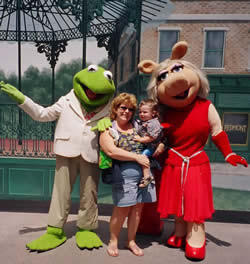
... formatted and finalized in the summer of 2006 in dedication of my son Reilly's fearless leap into Kindergarten! |
"Spang Gang" Web Program
Kindergarten
California Standards Alignment
|
...helping parents and teachers teach, practice and test with the best (and most current) internet tools available!!
|
|

CONCEPTS ABOUT PRINT |
READING
1.0 WORD ANALYSIS, FLUENCY AND SYSTEMATIC VOCABULARY DEVELOPMENT
|
|
|
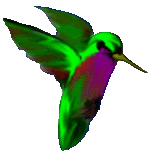 PHONEMIC AWARENESS PHONEMIC AWARENESS
K1.7 Track (move sequentially form sound to sound) and represent the number,
sameness/ difference,and order of two and three isolated phonemes
(e.g., /f, s, th/, /j, d, j/) |
|
Practice
Letter Blends
Clifford's Letter matching |
Assess |
K1.8 Track (move sequentially from sound to sound) and represent changes
in simple syllables and words with two and three sounds as one sound is added,
substituted, omitted, shifted, or repeated (e.g., VCCV, CVC) |
|
Practice
Words and Pictures games
Crankophone |
Assess
Match same sounds and words with this memory game |
| K1.9 Blend vowel-consonant sounds orally to make words or syllables |
|
Practice
Blending sounds to make words |
Assess
Phonics Word Builder |
| K1.10 Identify and produce rhyming words in response to an oral prompt |
Teach
Foxy Dancer's rhymes
RhymeBot rhyming lesson
Add a Beginning |
Practice
Digby *click "Rhymes"
*click Gus and Inky's Underwater adventure
*click Rhyme Time |
Assess
Reggie loves to Rhyme
The Cream Cake Mystery game |
K1.11 Distinguish orally stated one-syllable words and separate into beginning or ending sounds
|
|
Practice
*click Wild World Round Up
Digby Mole's word games |
Assess
Beginning sounds by Little Fingers
Phonics fighter |
| K1.12 Track auditorily each word in a sentence and each syllable in a word |
|
Practice
Clifford Interactive Storybooks |
Assess |
| K1.13 Count the number of sounds in syllables and syllables in words |
|
Practice
Syllable factory
Word Jumbler - count the Syllables game
Clap and Count Practice |
Assess
Syllable factory
Syllable test |
\ DECODING AND WORD RECOGNITION DECODING AND WORD RECOGNITION
 VOCABULARY AND CONCEPT DEVELOPMENT VOCABULARY AND CONCEPT DEVELOPMENT
|

COMPREHENSION AND ANALYSIS OF
GRADE LEVEL APPROPRIATE TEXT |
2.0 READING COMPREHENSION |
| K2.1.2 Locate the title, table of contents, name of author, and name of illustrator |
Teach |
Practice |
Assess |
| K2.2 Use pictures and context to make predictions about story content |
Teach |
Practice
TIger Aki animated storybooks and games |
Assess |
| K2.3 Connect to life experiences the information and events in texts |
Teach |
Practice |
Assess |
| K2.4 Retell familiar stories |
|
Practice |
Assess |
| K2.5 Ask and answer questions about essential elements of a text |
Teach |
Practice |
Assess |
|

NARRATIVE ANALYSIS OF GRADE LEVEL
APPROPRIATE TEXT |
3.0 LITERARY RESPONSE AND ANALYSIS |
| K3.1 Distinguish fantasy from realistic text |
|
Practice
|
Assess |
K3.2 Identify types of everyday print materials
(e.g., storybooks, poems, signs, labels) |
Teach |
Practice |
Assess |
| K3.3 Identify characters, settings and important events |
Teach |
Practice |
Assess |
|
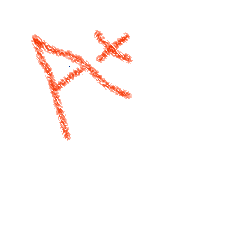
Writing Strategies and Penmanship |
Language- Writing and Speaking |
|

Sentence Structure and Spelling
|
1.0 Written and Oral English Language Conventions |
|

1.0 Listening and Speaking
| K1.1 Understand and follow one-and two-step oral directions. |
Teach |
Practice
|
Assess |
| K1.2 Share information and ideas, speaking audibly in complete, coherent sentences. |
Teach |
Practice |
Assess
|
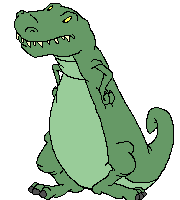
2.0 Speaking Applications (Genres and Their Characteristics)
| K2.1 Describe people, places, things (e.g., size, color, shape), locations, and actions. |
Teach |
Practice
|
Assess |
| K2.2 Recite short poems, rhymes, and songs. |
Teach |
Practice |
Assess
|
| K2.3 Relate an experience or creative story in a logical sequence |
|
Practice
|
Assess |
|
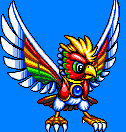
Number Sense |
MATH
1.0 Students understand the relationship between numbers and quantities
(i.e., that a set of objects has the same number of objects in
different situations regardless of its position or arrangement
|
|
2.0 Students understand and describe simple additions and subtractions:
3.0 Students use estimation strategies in computation and problem
solving that involve numbers that use the ones and tens places:
|

Algebra and Functions |
1.0 Students sort and classify objects: |
K1.1 Compare two or more sets of objects (up to ten objects in each group)
and identify which set is equal to, more than, or less than the other. |
Teach |
Practice
Can you Balance? |
Assess
Carnival Countdown |
|

Measurement and Geometry |
1.0 Students understand the concept of time and units to measure it;
they understand that objects have properties, such as length, weight,
and capacity, and that comparisons may be made by referring to |
K1.1 Compare the length, weight, and capacity of objects by making direct
comparisons with reference objects (e.g., note which object is shorter,
longer, taller, lighter, heavier, or holds more). |
|
Practice
Rank people from tallest to shortest
Elmo Limbo
Apple Picking |
Assess
Which has more?
Taller or Shorter
Sleuths on the Move |
K1.2 Demonstrate an understanding of concepts of time (e.g., morning,
afternoon, evening, today, yesterday, tomorrow, week, year) and tools
that measure time (e.g., clock, calendar) |
Teach
Put numbers on a clock |
Practice
Practice seasons and other reasoning with Daniel Cook |
Assess |
| K1.3 Name the days of the week |
|
Practice
|
Assess |
K1.4 Identify the time (to the nearest hour) of everyday events
(e.g., lunch time is 12 o'clock; bedtime is 8 o'clock at night). |
|
Practice
Telling time Quizzes |
Assess
Match clocks to the hour |
2.0 Students identify common objects in their environment and describe the features
K2.1 Identify and describe common geometric objects (e.g., circle, triangle,
square, rectangle, cube, sphere, cone). |
Teach |
Practice
Matching Shapes by Kidport |
Assess
Buzzing with Shapes 2 player game
Put it on the Shelf
First Grade Quiz |
K2.2 Compare familiar plane and solid objects by common attributes
(e.g., position, shape, size, roundness, number of corners) |
Teach |
Practice |
Assess
|
|
Statistics, Data Analysis, and Probability
|
1.0 Students collect information about objects and events in their
environment: |
|
|
Mathematical Reasoning |
K1.0 Students make decisions about how to set up a problem |
| K1.1 Determine the approach, materials, and strategies to be used |
|
Practice |
Assess
|
K1.2 Use tools and strategies, such as manipulatives or sketches,
to model problems |
Teach |
Practice |
Assess |
2.0 Students solve problems in reasonable ways and justify their reasoning
K2.1 Explain the reasoning used with concrete objects and/or pictorial representations. |
|
Practice |
Assess
|
K2.2 Make precise calculations and check the validity of the results in the
context of the problem. |
|
Practice |
Assess |
|
|